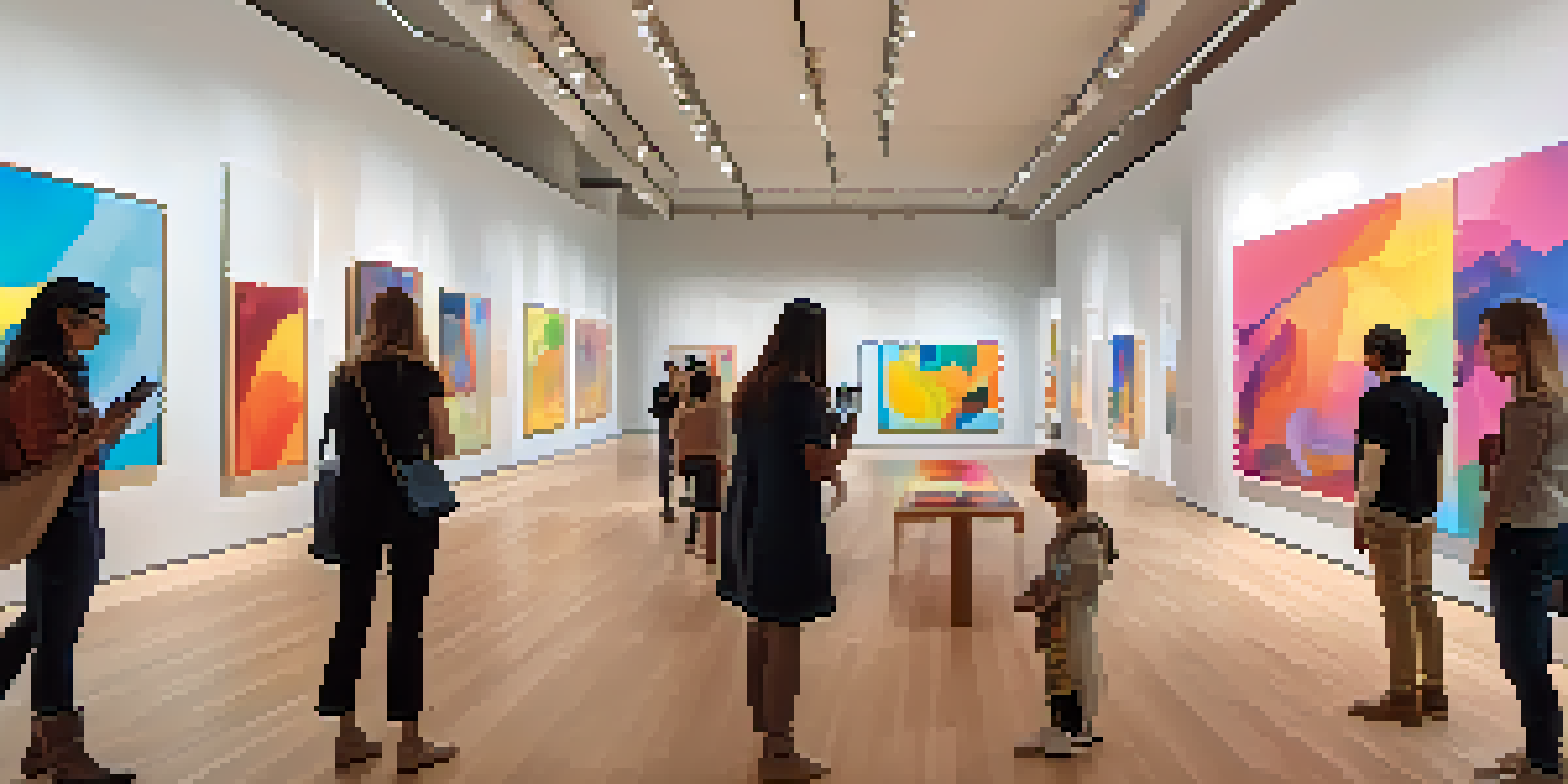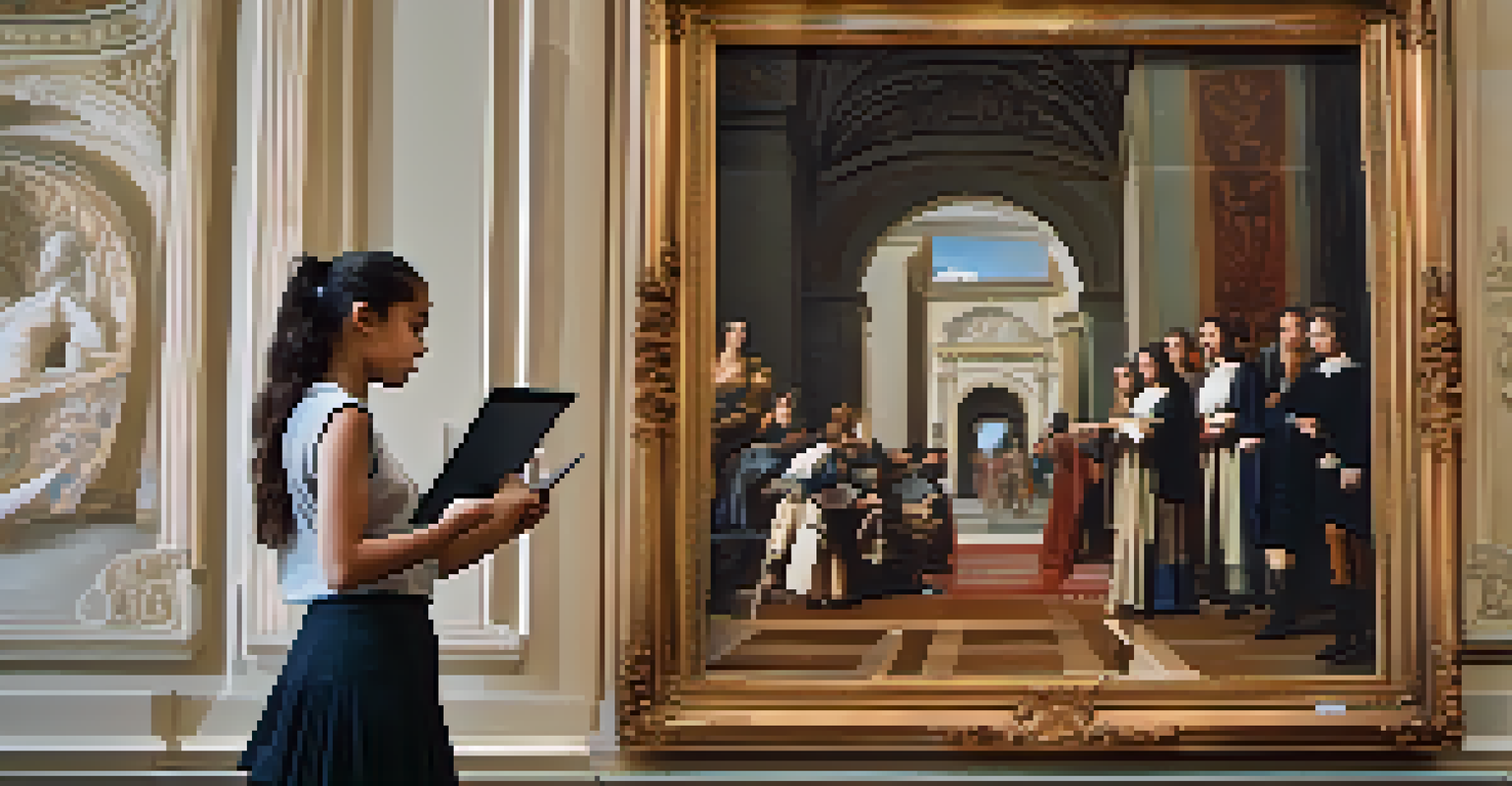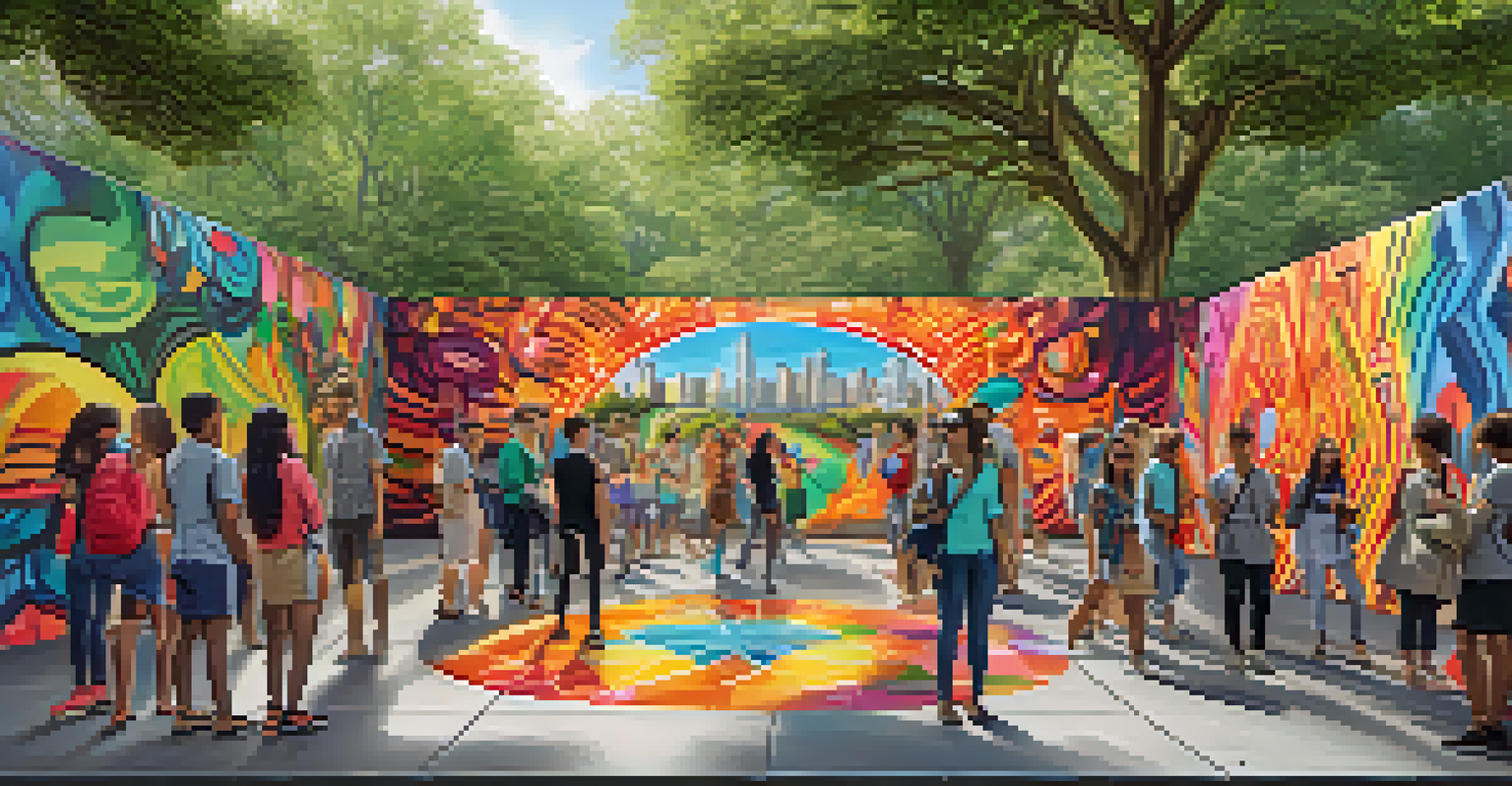Augmented Reality: Enhancing the Art Viewing Experience

What is Augmented Reality in the Art World?
Augmented Reality (AR) blends digital elements with the real world, creating an interactive experience. In the context of art, AR can enhance how we view and interact with artworks, making them more engaging and informative. Imagine pointing your smartphone at a painting and instantly seeing layers of history, artist interviews, or even animations that bring the piece to life.
Art is not what you see, but what you make others see.
This technology allows galleries and museums to present art in innovative ways, breaking down barriers between the viewer and the artwork. By superimposing digital content onto physical art, AR invites us to explore deeper meanings and contexts that might otherwise go unnoticed. It’s like having a personal tour guide in your pocket, ready to share insights at a moment's notice.
As AR continues to evolve, it's becoming increasingly accessible, allowing art institutions of all sizes to integrate this technology into their exhibits. The result? A richer, more immersive experience that transforms traditional art appreciation into something dynamic and participatory.
Enhancing Visitor Engagement Through AR
One of the most exciting benefits of AR in art galleries is increased visitor engagement. Instead of merely viewing a sculpture or painting, visitors can interact with the art in meaningful ways. They might use an app that reveals the artist's inspiration or provides a virtual tour that highlights key features of the piece.

This interactivity can make art feel more relevant and personal, especially for younger audiences who are used to technology in their everyday lives. By merging the physical and digital worlds, galleries can create memorable experiences that resonate long after the visit. For instance, imagine walking through an exhibit and seeing a mural that, when viewed through your device, transforms into a moving story.
AR Enhances Art Engagement
Augmented Reality transforms how visitors interact with art, making experiences more immersive and personal.
Such experiences not only captivate visitors but also encourage them to share their discoveries on social media, further amplifying the art's reach. This organic promotion can attract new audiences and spark conversations about art in ways that traditional methods simply cannot.
Educational Benefits of AR in Art Exhibitions
Educational institutions are leveraging AR to enhance art education, making learning more interactive and enjoyable. Instead of reading placards next to artworks, students can engage with AR elements that explain techniques, historical context, or even the materials used by the artist. This hands-on approach caters to various learning styles, making art history accessible to everyone.
Technology is best when it brings people together.
For example, students might scan a famous painting to see a video of the artist at work, providing insight into their creative process. This type of immersive learning fosters a deeper understanding and appreciation of art, turning a passive experience into an engaging exploration. It’s akin to having a virtual classroom right in front of the artwork, where learning is driven by curiosity.
Furthermore, AR can be an effective tool for remote learning. With virtual tours and interactive art experiences, students who cannot physically visit galleries still have the opportunity to explore and study art from around the world. This flexibility ensures that art education remains inclusive and diverse.
Case Studies: Successful AR Art Projects
Several art institutions have successfully integrated AR into their exhibitions, showcasing its potential. One notable example is the 'The Night Watch' project in Amsterdam, where visitors could use an app to see 3D animations depicting the painting’s history. This project captivated audiences, providing a unique way to engage with a classic work of art.
Another example is the 'AR Museum' in London, which features digital overlays that tell stories behind each piece. Visitors can scan various artworks to unlock additional content, such as audio guides and artist interviews. This innovative approach not only enriches the visitor experience but also highlights the museum's commitment to embracing technology.
Educational Advancements with AR
AR fosters interactive learning in art education, allowing students to engage with artworks in dynamic ways.
These case studies illustrate that AR can transform the way we experience art, making it more accessible and enjoyable for everyone. As more institutions adopt this technology, we can expect even more creative and engaging ways to experience art in the future.
Challenges and Considerations for Implementing AR
While the benefits of AR in art are compelling, there are challenges that institutions must consider. One significant hurdle is the cost of developing and maintaining AR applications. Creating high-quality content requires investment and expertise, which may deter smaller galleries from adopting the technology.
Moreover, not all visitors are tech-savvy, which could lead to a divide between those who can fully engage with AR experiences and those who cannot. It's essential for galleries to offer support and guidance to ensure that everyone can participate. This could mean providing tutorials or staff assistance to help visitors navigate the technology.
Lastly, there’s the question of how much digital enhancement is too much. Striking the right balance between the physical art and its digital counterpart is crucial to maintaining the integrity of the artwork. Institutions must be mindful not to overshadow the art itself, ensuring that AR serves to enhance rather than distract from the viewing experience.
The Future of AR in Art Appreciation
As technology continues to advance, the future of AR in art appreciation looks promising. We can anticipate even more sophisticated applications that will further enhance our interactions with art. Imagine virtual reality experiences where you can step into a painting or interact with 3D models of sculptures in your own space.
In addition, as AR becomes more integrated into daily life through devices like smart glasses, art experiences may become more seamless and immersive. This could lead to spontaneous art encounters in public spaces, with digital overlays revealing hidden stories and connections to the artworks around us.
Future of Art with AR Technology
The future promises even more sophisticated AR applications that will deepen our connections with art.
Ultimately, the goal of integrating AR into art appreciation is to foster a deeper connection between viewers and the artwork. As we embrace these technological advancements, we can look forward to a future where art is not just viewed but experienced in dynamic and transformative ways.
Conclusion: Embracing the Intersection of Art and Technology
In conclusion, augmented reality is reshaping the way we view and appreciate art, making it more engaging and accessible than ever before. By blending the physical and digital realms, AR invites us to explore art in new and innovative ways. The potential for increased engagement, educational benefits, and unique experiences is truly exciting.
However, as we navigate this intersection of art and technology, it’s crucial for institutions to address the challenges that come with it. By ensuring that AR experiences are inclusive and supportive, galleries can create a welcoming environment for all art lovers, regardless of their tech skills.

As we look to the future, embracing AR in the art world paves the way for a richer, more dynamic appreciation of creativity. Let’s celebrate this evolution and welcome the endless possibilities that augmented reality brings to the art viewing experience.